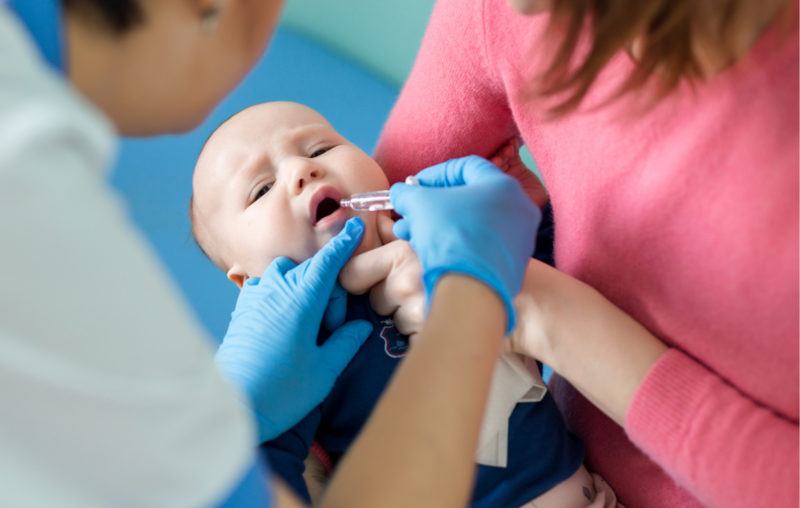Which Diseases Are on the Rise As We Fight COVID-19?

The battle against COVID-19 has been a grand and tragic balancing act. Reopening countries prematurely, the wisdom goes, will lead to an increase in cases and deaths; on the other side of the scale, rising unemployment rates and business closures threaten unfathomable poverty. Most nations have made a choice: they have elected to lay dormant and halt their economies in the name of saving lives.
That tradeoff, intended to prevent widespread human loss, may be difficult to argue against at face value. But reality is hardly that simple.
Our vigor to defeat COVID-19 has caused us to become complacent toward countless diseases, some of which were on the path to eradication. And while the world may have taken a break from those pursuits, by no means have these diseases vanished.
Intuitively, limited medical supplies and staff must be delegated according to the most pressing needs. COVID-19 has indeed proven devastating to certain populations, and in many parts of the world, those allocations may be warranted. But going all-in on these efforts means ignoring others. Combine this fixation with the fact that supply chains have been thoroughly upended and medical shortages abound and epidemiological disaster is all but inevitable.
As the world continues to collectively combat one disease, it is worth discussing the others we have cast a blind eye on. Because while they might not be quite as newsworthy as COVID-19, the damage they inflict could prove just as devastating.
Polio, Nearly Eliminated, Creeps Back
For a time, polio was one of the most terrifying diseases in the United States. Roughly 35,000 people were paralyzed yearly throughout the 1940s––a particularly unfortunate metric given that the disease primarily affects children under the age of 5. Parents kept kids indoors during the late summer “polio season” and survivors were kept alive on iron lungs.
It looked as if everything would change after Jonas Salk discovered an effective vaccine in 1953. Widespread vaccination soon began in the United States, and the nation officially eliminated polio in 1979.
Since 1988, global vaccine campaigns have led to a decrease of over 99 percent in polio cases, with more than 16 million people saved from paralysis by the World Health Organization’s estimate. Polio is now endemic in only two countries––Pakistan and Afghanistan. They, too, were inching closer and closer to complete eradication.
But as the world sets its sights on COVID-19, polio has come to thrive on neglect. In Afghanistan, polio arose in three provinces that had not reported cases of the virus in as long as five years. The nation was only able to complete two polio vaccination campaigns before COVID-19 took control, though it typically conducts up to ten per year. Since January, Pakistan has reported at least 59 cases of the virus. The country’s medical authorities are now scrambling to resume vaccination campaigns.
Because polio cannot survive for long outside the human body, it is one of the few diseases that we can entirely eliminate. That is why this resurgence is so dangerous––and heartbreaking. For as long as cases continue to spring up around the world, no matter how few, polio is a threat.
The tradeoff is clear. As nations pick their battles, some efforts will fall to the wayside. And fall they have––at least 13.5 million kids around the world are now vulnerable to polio due to suspended vaccination campaigns, 24-hour polio hotlines in Nigeria and Pakistan mostly field COVID-19 calls, and millions of stored vaccines may lose their efficacy if they remain shelved much longer.
HIV, Still a Global Epidemic
Since the HIV epidemic began, an estimated 75.7 million people have contracted the incurable disease. Those who contracted HIV before treatment was available very often developed AIDS, as do patients who test positive now and cannot access treatment. AIDS leaves patients severely immunocompromised and susceptible to deadly opportunistic infections, which have killed an estimated 32.7 million people since the beginning of the epidemic.
An HIV diagnosis was once effectively a death sentence, but advances in prevention and treatment now offer hope in the global battle against the disease. Effective tactics include testing to identify who might be spreading HIV and administering antiretroviral therapy to prevent HIV-positive people from infecting others and developing AIDS.
Unfortunately, testing rates have faltered. Dr. Monica Gandhi, director of the University of California San Francisco Center for AIDS Research, reported that HIV testing had declined by 90 percent in San Francisco since the beginning of COVID-19. In Boston, that decline reached 85 percent. According to Gandhi, “The message to come in early and get tested for HIV has changed. Now, people are told to stay away.”
Proper treatment may also prove unobtainable in short order, given ongoing supply chain disruptions and international border closures that prevent delivery. As of July 6, 73 countries were at risk of exhausting their supplies of antiretroviral drugs, with 24 reporting critical shortages. In those 24 countries, around 8.3 million people rely on antiretroviral therapy––roughly one third of people receiving HIV treatment worldwide.
For patients with access to medication, HIV can become a chronic illness rather than a death sentence. But for treatment to work, patients must adhere to a strict regimen. Disrupting that process puts patients at risk of developing AIDS and other deadly conditions. Further, proper medication reduces a patient’s viral load, making the virus effectively untransmittable. Interruptions to treatment do not just affect existing HIV patients––they put contacts of those patients at risk.
Though it is admittedly difficult to predict the procession of a disease, one projection offered by the WHO and UNAIDS estimates that a six-month disruption to antiretroviral therapy would result in 500,000 deaths in sub-Saharan Africa alone. Decades of research have taught us how to defeat this disease, but given how many clinics have been forced to limit or suspend HIV services in favor of coronavirus care, that hard-earned progress may soon be undone.
Tuberculosis, the World’s Deadliest Infectious Disease
Back in the 1880s, tuberculosis killed one in seven people living in the United States and Europe. In sum, it is thought to have taken over one billion lives between 1800 and 2017. Active tuberculosis is a truly imposing disease if left untreated––80 percent of patients who fall ill and receive no medical attention eventually die.
In the West, public health authorities implemented a “search, treat, and prevent” strategy to stop the disease in its tracks. A combination of contact tracing, treatment, and preventative therapy helped these countries halt the white plague. And now, similar programs take on the disease in regions where it remains prevalent, namely in Southeast Asia, Africa, and the Western Pacific. Thanks to these efforts, the tuberculosis mortality rate dropped by 42 percent between 2000 and 2017. Millions of lives were saved.
Most tuberculosis cases can be cured with a six-month course of four antibiotics, a regimen that has become the linchpin of global campaigns. Unfortunately, many TB patients end treatment prematurely, often due to drug shortages or lack of guidance from medical professionals. They may eventually develop a resistance to medication, and some strains of the disease are untreatable altogether. These patients, and patients who go undiagnosed, are dangerous given how transmissible tuberculosis is––one person with the active disease can infect 10 to 15 others over the course of a year.
It goes without saying that negligence toward tuberculosis could prove catastrophic, particularly in some of the most disadvantaged parts of the world. But many of the most TB-susceptible countries have instead turned their attention to COVID-19. As of mid-June, 78 percent of tuberculosis programs worldwide had experienced disruptions.
With roughly 10 million people contracting tuberculosis every year––and over 4,000 dying from the disease every day––under aggressive prevention and treatment programs, increased case and fatality numbers are inevitable now that global campaigns have been interrupted. And perhaps most infuriatingly, tuberculosis patients are the demographic most likely to die of COVID-19. Scrapping tuberculosis programs is, in fact, worsening the effects of COVID-19.
The Dilemma
These are hardly the only diseases raging alongside COVID-19. The Democratic Republic of Congo concluded a fight against ebola in June only to face another in July, Yemen is still rattled by cholera, and Singapore is on track to experience its biggest dengue fever outbreak in history.
Countries are trading COVID-19 for paralysis by polio, lifelong HIV diagnoses, and preventable TB deaths. The least fortunate populations will, tragically, be disproportionately affected. Half of the top 10 causes of death in low-income nations are infectious diseases, including several of the conditions mentioned in this article. They require extensive prevention and treatment, which are harder to attain now than ever before.
Devoting any and all medical resources to one cause necessarily removes them from another. There are only so many nurses, clinics, and syringes in the world. But the division of those resources, in its current state, may very well be misguided. At-all-costs rhetoric may prove effective against COVID-19, but in no way does it take into account the very real and very deadly diseases that continue to spread across the globe.
Proponents of COVID-19 prevention measures are perfectly willing to discuss the lives that are saved at the expense of economic progress. But when will there be widespread recognition that these very same measures could cause millions of people around the world to contract––and die from––other preventable diseases? Are those lives somehow exempt from our tradeoff tally?











